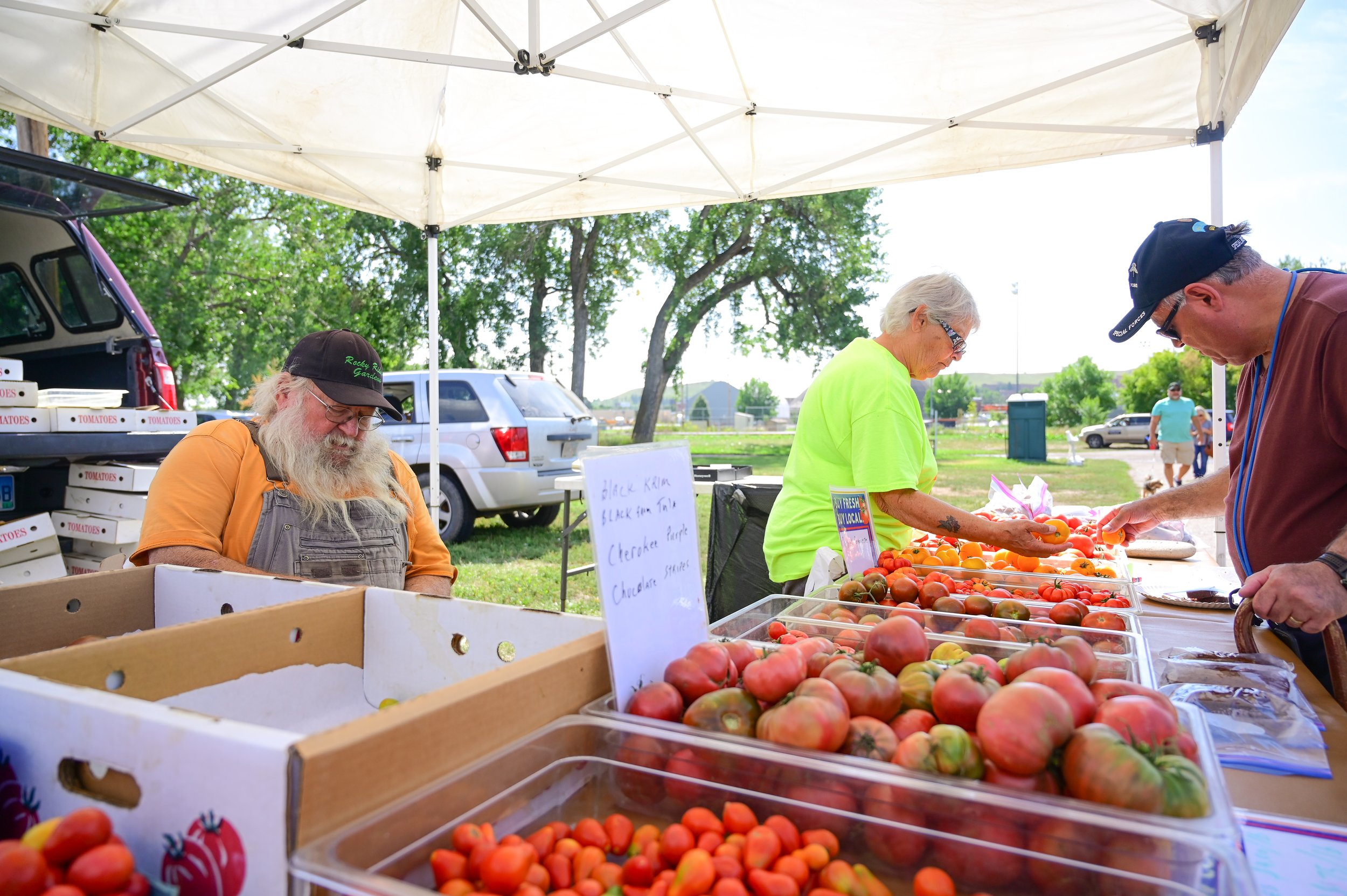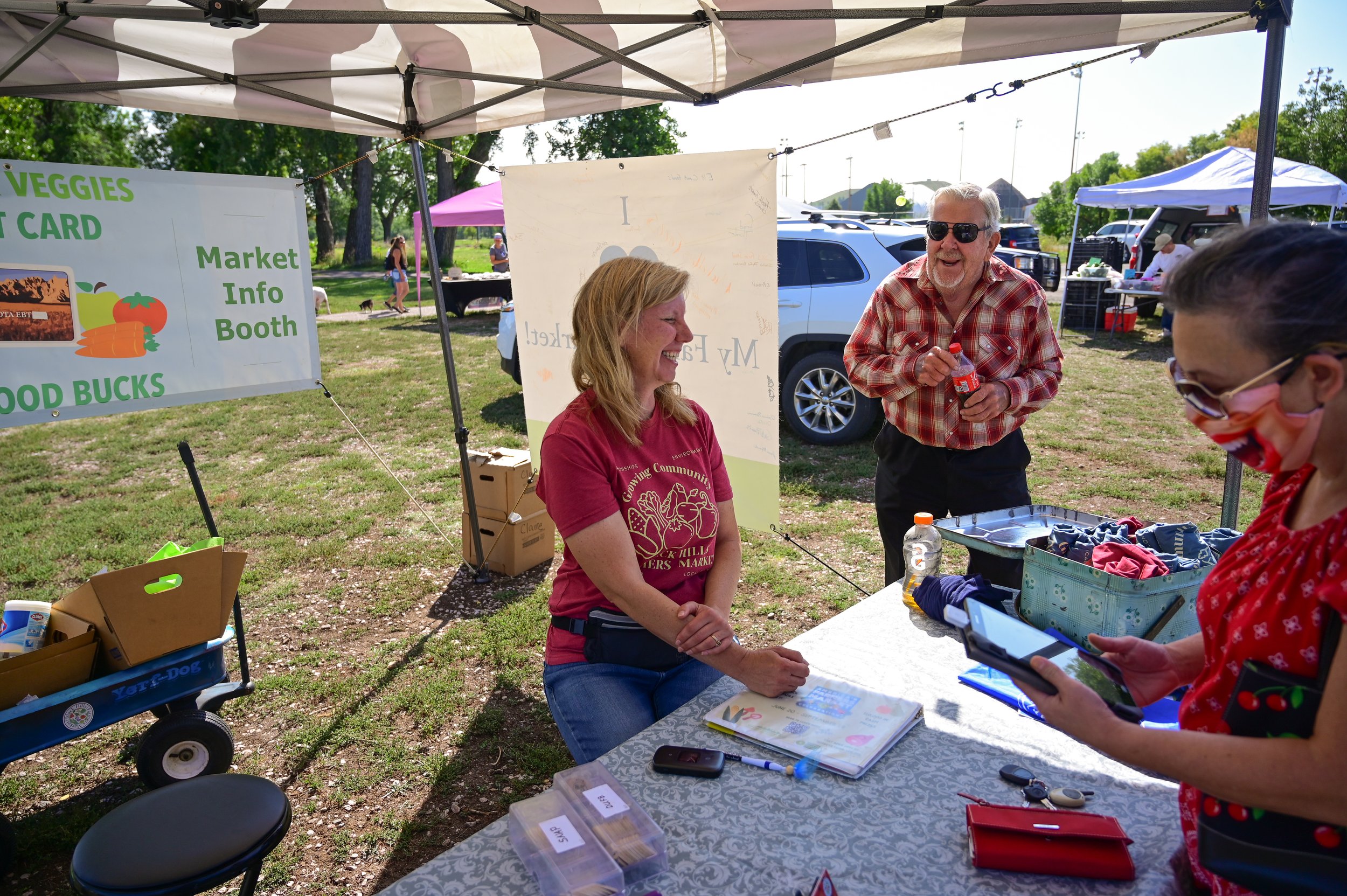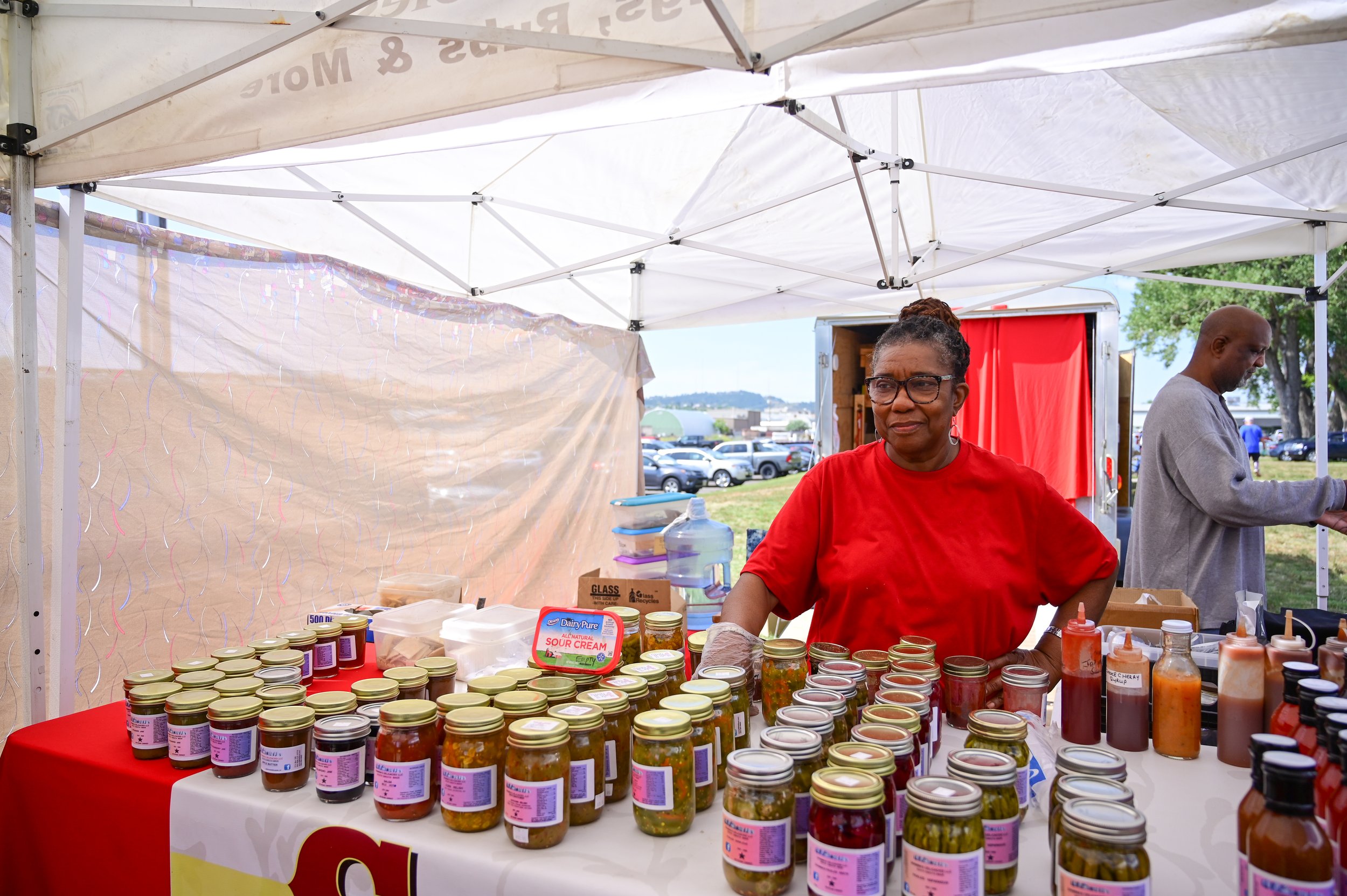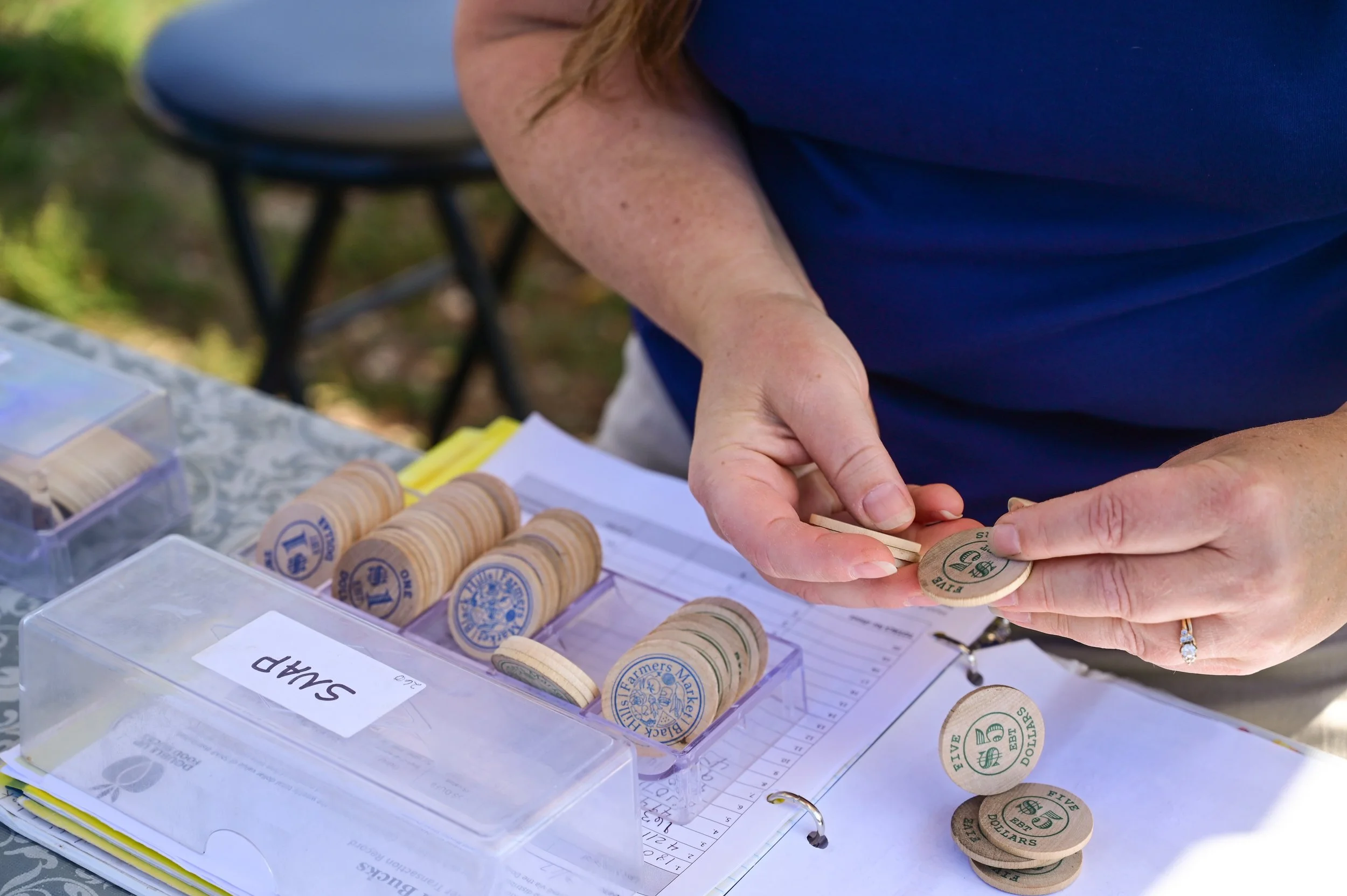Black Hills Farmers Market Expands Public Access to Local Foods
Barbara Crommwell (left) and Ann Eads (Right).
The Black Hills Farmers market was chattering with neighbors catching up, live music coming from a mom and pop band playing classic folk songs, and the smell of kettle corn drawing people in from the sidewalk. The Farmers Market Supervisor, Barbara Cromwell and Ann Eads sat at the entrance to greet people and distribute resources to the farmer market visitors. This is where dozens of people stop in to collect tokens to redeem Supplemental Nutrition Assistance Program (SNAP) benefits. Families, single parents, and individuals alike are able to take part in the program. Children that were given tokens from their parents take off running to find the stand where they will redeem their tokens for a local product. These tokens work like regular dollars and are helping bring a broader demographic of people access to fresh, local food and produce.
The market has accepted SNAP for nearly 13 years now, which several thousands of other farmers markets across the U.S. also accept. One of the barriers that keeps all markets from offering this service is that there is a significant amount of work that goes into applying to the program that allows farmers markets to accept SNAP benefits. Barbara is a part-time employee of the market, giving the market the capacity to jump through the hoops involved in getting SNAP certified. “It's a time thing. And then there are expenses to the market to be able to offer that,” explained Barbara. “We've been able to offset that through community sponsorships and some grants. We've prioritized what we feel is really important: for families on a budget to be able to come and enjoy this wonderful local food.”
Through community sponsorships, the Black Hills Farmers market is now able to double the SNAP benefits up to twenty dollars per market-day through their Double Up Food Bucks program. Various organizations in the community donated money so that people already receiving SNAP benefits could double up and receive up to 20 dollars more per day. “It's really kind of expanded from that to where now, we have a produce prescription program where we partner with a couple of the community health clinics as well as LOVE, inc. here in town.” People bring their tokens up to one of the many vendors and walk away with fresh produce.
The Black Hills Farmers Market has adapted the way that it reaches people. Barbara and others noticed that if they shifted the language around using SNAP benefits to buy groceries rather than specifically produce, that more people took advantage of the program. “That small change has brought a lot of people to the market for the first time that maybe wouldn't have otherwise. And then it's naturally heavy on vegetables. I mean, just being at a farmers market increases the likelihood that you'll buy vegetables because they're amazing.” said Barbara.
The Black Hills Farmers Market runs year round, increasing the community's access to fresh food beyond just the summer months. “The nature of farmers markets fosters a lot of community support because you have those direct connections with people,” said Barbara.
Barbara painted a picture of what the overall health of the public could look like if their options at the grocery store were more than half fresh produce, the way farmers markets are. As the narrative around food has continued to shift and evolve especially after seeing the impacts of a pandemic on the food system, the hope is that the public will continue to support local food. “I think people are recognizing more of the value of local food, how it supports your health and promotes the local economy, and the resiliency of the local supply chain,” said Barbara, “I think that we all saw that much more concretely than we had before.”







Supporting local producers lowers the carbon footprint of the food while supporting the local economy. Nutrients in fruits and vegetables quickly oxidize and lose value over just a few days, not to mention the additives needed to keep food fresh while being shipped all over. Produce in grocery stores is shipped in from all over the United States and sometimes across countries, while farmers market produce typically goes from the farm to stand within 24 hours. Access to fresh food should not be determined by wealth or background. “Everybody eats,” Barbara said, looking around at the folks handing their tokens over for fresh produce. “And so food brings diverse people together, and forges that common ground.”


